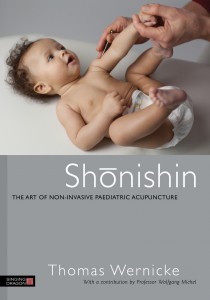In our previous blog we introduced the element Wood through a visualization exercise to help children begin to feel the Element in themselves and the environment. The focus was on the imagination and creativity qualities that Wood Element offers in life. We will continue with Wood in this blog and expand on the way it supports child development.
Beside creativity and imagination, the Wood Element gives us two other important gifts, our physical mobility and flexibility. Here we want to emphasize that the development of flexibility happens as strongly in the mental capacity as in the physical. A good analogy of a flexible nature in someone can be seen in a bamboo tree. No matter which direction the wind blows, bamboo will stand upright over and over again. The following exercise is an example of how you can bring this experience to a family or small group of children. It creates a lot of movement involving rolling, turning and stretching that is good for everyone. Above all, it is really fun and brings laughter and play into the dynamics of any group.
Particularly in springtime we experience a large variety of colours in nature. Everything blossoms, budding fresh green leaves and flowers of every hue. Everywhere you look nature is full of energy and joy for life. The following exercise can bring all of these qualities to everyone in the family or group.
The family members sit down on a big towel of their own, and are told it is a large tub full of different colours, whatever they imagine. Everyone chooses one particular colour that they are sitting in and shares which colour they selected. Each can say the special reason why the colour they picked is their colour for today.
Then everybody should “paint himself” –if possible everywhere- with his favourite colour, by turning on his towel, rolling and lolling about. Encourage each to try all the movements possible in their tub.
Then ask, “Is your body totally covered with colour? Well, now let’s paint the floor!“
Everybody rolls and rolls throughout the space. There are obstacles everywhere! If another person is touched, their colours mix. What colour is it now?
After a few minutes everybody sits up.
“So, now let’s paint the soles of each other’s feet – pick a partner and ask your partner which colour he would like. Apply the colour firmly on your partner’s soles. When you are done, everybody stand up and make footprints with big or small steps in the whole room! Now, try to walk in the footprints of another person and see what it feels like to walk in their steps.”
Everybody has to go under a shower afterwards. Everyone searches for a place in the room for himself/herself and shakes the colours off vigorously under their shower.
To end, everyone must hop until they are dry!
The physical activity of this exercise allows the Wood Element’s need for large movements, imagination, loud noises, and stretching for everyone. Allow the dynamics of the group to unfold. There might be natural directors that appear as others ideas and creativity come and go. Give room for each to experience and work out what might be difficult or easy in the interactions and instructions. Experiencing any difficulty is as important as experiencing the ease in all of the Five Element exercises, as participants have the opportunity to try out new solutions.
If anger appears, allow this. Anger is the natural response to frustration and the emotion expressed in the Wood Element. Activities that give children permission to experiment with anger, supports healthy development as they learn how to manage this strong energy. For those that struggle moving through this emotion, the following exercise can be added:
Lightning Power
 Sit without shoes on a chair. Cling your toes into the floor and tense all the muscles of your feet.
Sit without shoes on a chair. Cling your toes into the floor and tense all the muscles of your feet.
Now imagine a lightning bolt which sends the anger down into the floor. If the child likes he/she can also clench the hands and make a grimace with the face.
After a while relax and enjoy how much lighter everything feels now.
We invite you to look for what comes next month as we enter into the Fire Element and season of summer. This article can be downloaded in a pdf format by clicking on this link so that you can start creating a notebook of Five Element exercises that will be offered each month. You can find more information and examples of how the Five Elements support development in children in the book, Children at Their Best: Understanding and Using the Five Elements to Develop Children’s Full Potential for Parents, Teachers, and Therapists, published by Singing Dragon.
NEXT: July Fire Element Activities – nicking socks and making faces





 Singing Dragon received the Gold prize in the Enlightenment/Spirituality category for
Singing Dragon received the Gold prize in the Enlightenment/Spirituality category for